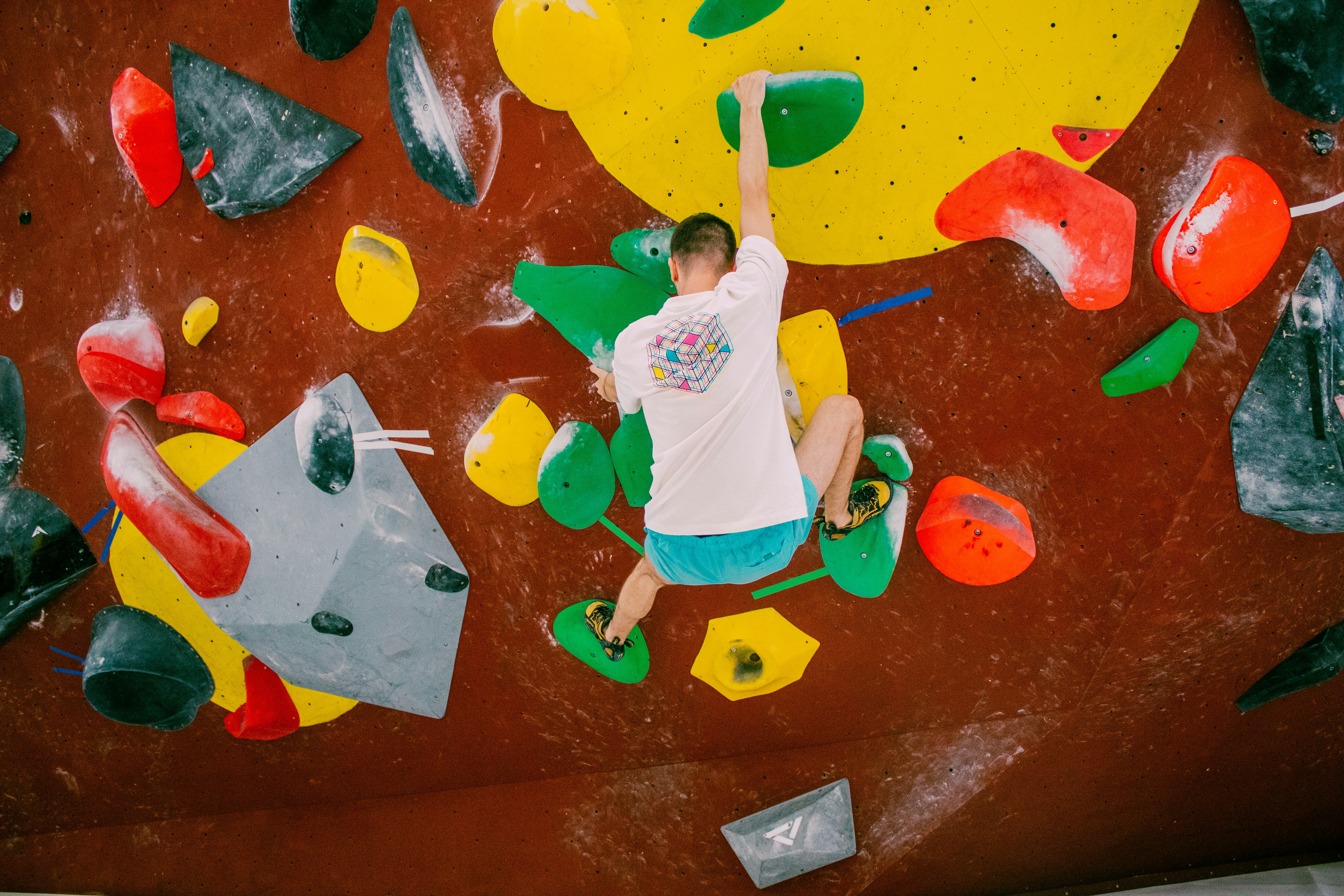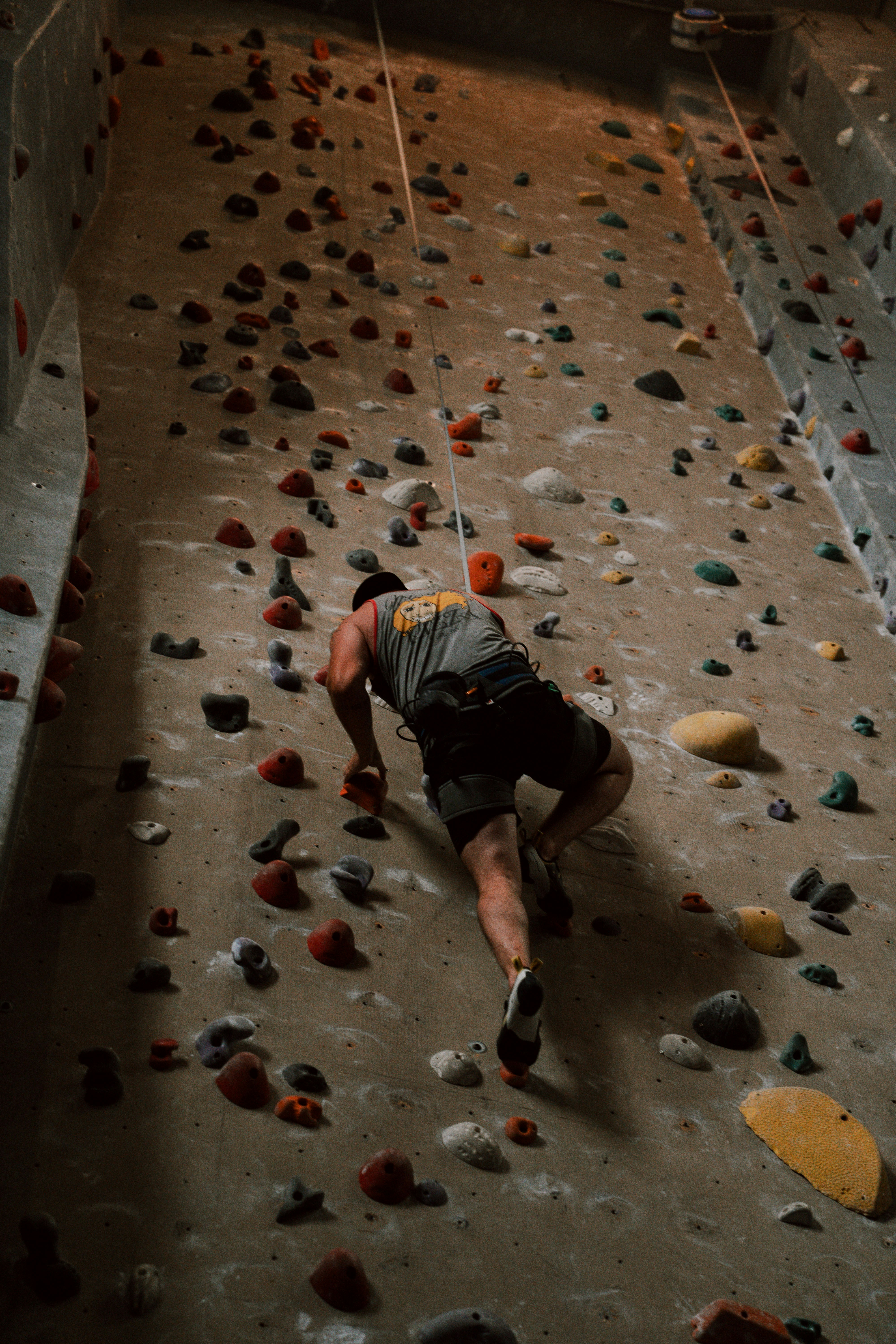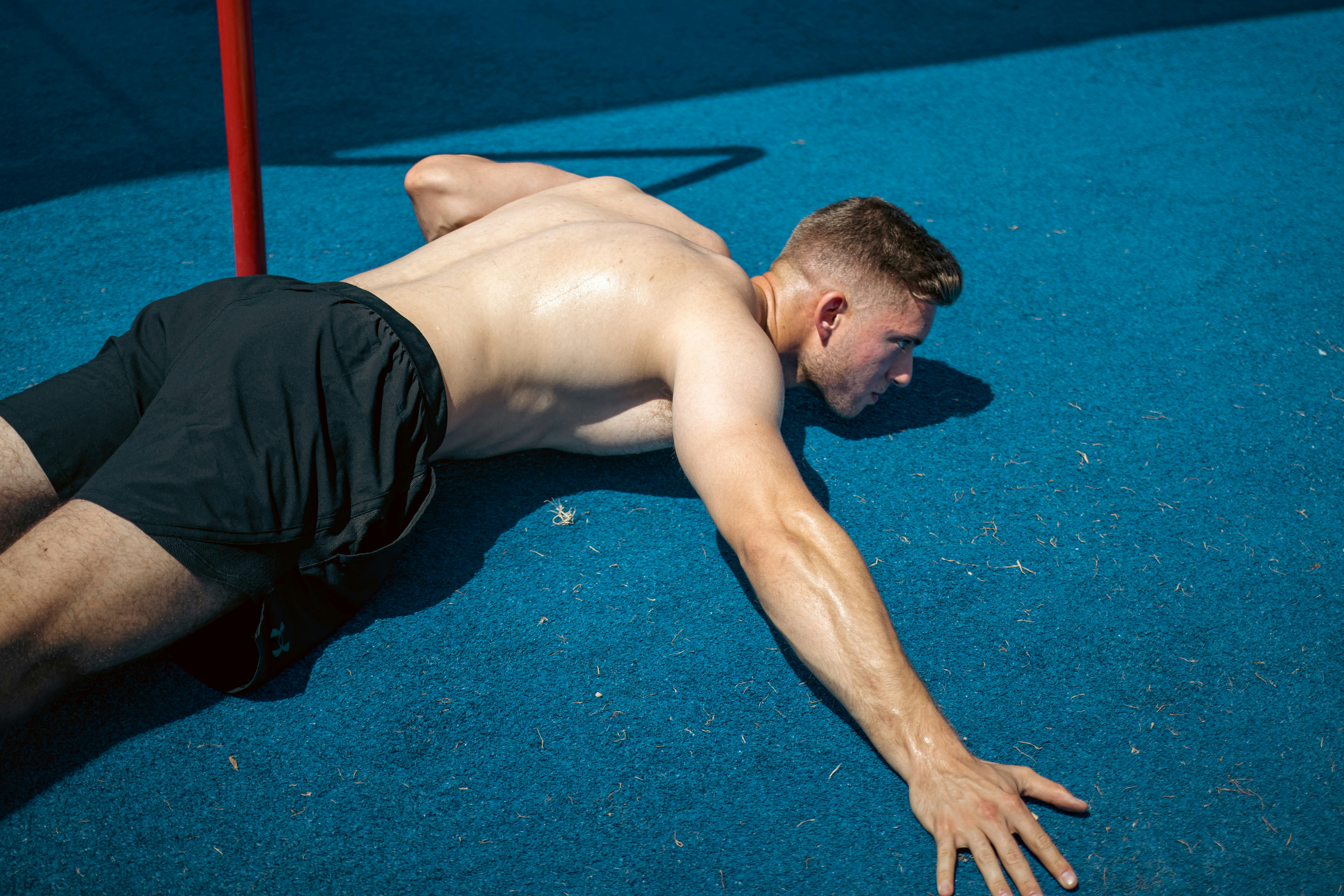The dust is settling on the 2025 IFSC World Championships in Seoul, and as another competition season draws to a close, serious climbers face a crucial transition period. What you do in the next few months determines whether you'll return stronger next season or find yourself struggling to regain previous form. The athletes who just competed at world-level understand this transition better than anyone.
Competition season demands peak physical condition, sharp technique, and mental readiness for performance under pressure. But maintaining that intensity year-round leads to burnout, injury, and stagnation. The smartest competitors use their off-season strategically, building the foundation that makes next season's peaks possible while addressing weaknesses revealed during competition.
The transition from competition mode to off-season training isn't just about taking time off. Elite climbers approach this period with the same systematic thinking they apply to competition preparation. They use the immediate post-season period to recover completely, then gradually rebuild with specific focus areas that emerged from competition analysis.
Understanding how to structure this transition separates climbers who consistently improve from those who plateau. The athletes competing at championships level have learned to view off-season training as preparation for preparation - building the physical and technical base that makes quality competition training possible.
Post-Competition Recovery and Analysis
The immediate weeks following competition season require careful attention to recovery before diving into new training phases. Your body and mind have been operating at high intensity for months, and attempting to maintain that level indefinitely leads to diminishing returns and eventual breakdown.
Physical recovery involves more than just rest days. Elite climbers use this period for comprehensive body maintenance including massage therapy, physical therapy assessments, and addressing minor injuries that accumulated during competition season. This proactive approach prevents small issues from becoming major problems that derail future training.
Mental recovery proves equally important for sustained competitive development. Competition season involves constant pressure, evaluation, and performance demands that create psychological fatigue even when you're not consciously aware of it. Taking genuine breaks from climbing-related pressure allows your motivation and enthusiasm to regenerate naturally.
Competition analysis during early recovery helps identify specific areas for off-season development without the emotional charge of immediate post-competition feelings. Review your competition performances systematically, focusing on patterns rather than individual results. What technical limitations appeared repeatedly? Which physical qualities seemed insufficient? Where did mental game issues surface?
The goal of post-competition analysis isn't criticism but data collection for informed training decisions. Elite athletes maintain detailed training and competition logs throughout the season specifically to support this analysis process. They look for trends across multiple competitions rather than overreacting to single disappointing performances.
This recovery period also provides opportunities for broader perspective on your climbing development. Competition season necessarily involves narrow focus on performance optimization, but off-season allows time for exploring other aspects of climbing that support long-term development while maintaining general enthusiasm for the sport.
Strength Training Periodization for Climbers
Off-season presents the ideal opportunity for focused strength development that's difficult to achieve during competition periods. Competition climbing demands maintaining existing strength while optimizing technique and tactics, but building new strength requires training stress that would interfere with peak performance requirements.
The concept of periodization becomes crucial for climbing strength development. Elite climbers structure their off-season training in phases that progressively build toward competition season requirements while maximizing adaptation to strength training stimuli. This systematic approach produces better results than year-round maintenance training.
General strength development should precede climbing-specific strength work during off-season training. This means spending initial weeks on fundamental movement patterns, overall muscular balance, and building training capacity before transitioning to finger strength and climbing-specific exercises.
Your competition season analysis informs strength training priorities during off-season development. If you struggled with endurance on longer boulder problems, your off-season might emphasize aerobic capacity and lactate threshold development. If power limitations appeared in dynamic sections, explosive strength development becomes the primary focus.
Progressive overload principles apply to climbing strength training just as they do to general fitness development. Elite climbers systematically increase training loads throughout off-season, building toward peak strength levels that support intense competition preparation in subsequent phases.
The integration of strength training with continued climbing practice requires careful attention to recovery and adaptation. Too much volume in either area interferes with progress in both. Successful off-season programs find the optimal balance that maximizes strength development while maintaining climbing movement quality and technical skills.
Technical Development During Off-Season
Off-season provides unique opportunities for technical skill development that competition season demands don't allow. During peak performance periods, you stick with proven techniques and avoid experimenting with movements that might interfere with competitive execution. Off-season removes these constraints, allowing systematic technical improvement.
Video analysis becomes particularly valuable during off-season technical work. Record yourself climbing various problems and routes, then analyze movement patterns systematically. Look for recurring technical limitations that appeared during competition season and develop specific drills to address these weaknesses.
Working with qualified climbing coaches during off-season accelerates technical development significantly. Coaches can identify movement inefficiencies that are difficult to self-diagnose and provide structured progression for improving technical skills. This investment in coaching often produces the biggest improvements in overall climbing performance.
Technique development should follow logical progressions from simple to complex movements. Start with fundamental body positioning and footwork patterns before progressing to advanced dynamic movements or specialized techniques. Building solid foundations supports more advanced technical development later in the training cycle.
Cross-training activities can support climbing technique development when chosen thoughtfully. Yoga improves flexibility and body awareness that translates to better climbing movement. Dance or gymnastics develops spatial awareness and movement flow that enhances climbing fluidity. Martial arts builds balance and precise movement control under dynamic conditions.
The key to successful technical development lies in deliberate practice principles. Focus intensely on specific movement patterns rather than just climbing volume. Break complex movements into component parts, practice each element systematically, then integrate them into fluid sequences.
Building Competition-Specific Fitness
Competition climbing demands unique fitness qualities that differ from general climbing fitness. Understanding these specific requirements helps structure off-season training for maximum competitive benefit rather than just general climbing improvement.
Power endurance stands as the most crucial fitness quality for modern competition climbing. This means sustaining high-intensity efforts for extended periods, typically lasting 2-6 minutes depending on discipline and format. Building power endurance requires specific training methods that differ from pure power development or aerobic conditioning.
Speed climbing demands explosive power and technical precision under time pressure. Training for speed competition involves specific movement patterns practiced at maximum intensity with complete recovery between efforts. This type of training requires careful progression to avoid injury while building competition-specific capabilities.
Bouldering competitions emphasize maximum strength and power for brief, intense efforts. Training should focus on high-intensity, short-duration efforts with extensive recovery periods. This training style develops the anaerobic power systems crucial for competition bouldering success.
Lead climbing competitions require sustained power output over longer time periods combined with tactical execution under pressure. Training programs should include extended, moderate-intensity climbing with limited rest periods to develop the specific endurance requirements of competition lead climbing.
Recovery capacity becomes crucial for competition formats involving multiple rounds in single days. Athletes who can recover quickly between efforts gain significant competitive advantages. Training programs should include methods for improving active recovery and maintaining performance quality through multiple high-intensity efforts.
Mental Game Development Off-Season
Off-season provides ideal conditions for developing mental game skills without the pressure of immediate competition demands. This period allows systematic work on psychological aspects of competitive climbing that are difficult to address during competition season when mental energy focuses on performance rather than development.
Visualization training becomes more effective when practiced consistently over extended periods rather than just during competition season. Develop detailed mental rehearsal routines during off-season, practicing not just successful performances but also managing various challenging scenarios that might arise during competitions.
Pressure training should be integrated regularly into off-season climbing sessions to maintain comfort with competitive stress. Create artificial pressure situations during gym sessions through time constraints, consequences for failure, or performance in front of others. Regular exposure to pressure maintains mental skills between competition seasons.
Goal setting for upcoming competition seasons requires careful consideration during off-season periods. Set both process-oriented goals focusing on training quality and development, and outcome goals that provide motivation and direction. Effective goal setting creates roadmaps for training decisions throughout the off-season period.
Mental skills training often benefits from working with sports psychology professionals during off-season when time allows for systematic development. These professionals can help identify individual mental game strengths and weaknesses, then develop personalized strategies for competitive mental performance improvement.
Stress management skills developed during off-season transfer directly to competition performance. Practice various relaxation techniques, breathing protocols, and attention control methods during low-pressure training environments. This builds familiarity and effectiveness that translates to competitive situations.
Injury Prevention and Movement Quality
Off-season training should prioritize injury prevention and movement quality improvement above maximum performance. This long-term perspective protects your ability to train consistently while building the foundation for sustained competitive development over multiple seasons.
Movement screening during early off-season identifies potential injury risks before they become actual problems. Work with qualified professionals to assess movement patterns, identify asymmetries or limitations, and develop corrective exercise programs that address these issues systematically.
Flexibility and mobility work receives proper attention during off-season when training demands allow time for comprehensive body maintenance. Systematic stretching and mobility programs improve climbing movement efficiency while reducing injury risk through improved joint range of motion and muscle extensibility.
Antagonist muscle strengthening becomes crucial during off-season training periods. Climbing creates muscular imbalances through repetitive pulling movements and finger gripping. Systematic training of pushing muscles, extensors, and postural stabilizers helps maintain muscular balance and reduces overuse injury risk.
Core stability training supports climbing performance while providing injury prevention benefits throughout the kinetic chain. Develop core strength in climbing-specific positions rather than just general core exercises. This specificity improves performance transfer while addressing stability requirements unique to climbing movements.
Sleep quality and recovery protocols deserve systematic attention during off-season training. Establish consistent sleep schedules, optimize recovery nutrition, and develop systematic approaches to training recovery. These habits become crucial during intense competition preparation phases when recovery demands increase significantly.
Planning Your Competition Training Cycles
Effective off-season training requires clear planning for upcoming competition season training cycles. Elite climbers work backward from competition dates to structure training phases that peak appropriately for target events while maintaining health and motivation throughout the process.
Macrocycle planning involves dividing the entire training year into distinct phases with specific purposes and training emphasis. Typically this includes off-season foundation building, pre-competition preparation, competition season, and post-competition recovery periods. Each phase serves specific purposes in overall competitive development.
Mesocycle planning breaks larger training phases into 3-6 week blocks with specific training focuses. During off-season, these might include strength development blocks, technical improvement phases, or specific fitness development periods. This structure prevents stagnation while ensuring systematic progress toward competition season requirements.
Microcycle planning addresses weekly training structure within larger training blocks. Elite climbers plan weekly training loads, recovery periods, and specific session focuses to optimize adaptation while preventing overtraining. This detailed planning becomes crucial during intense training phases.
Flexibility within structured planning allows adaptation to individual responses, life circumstances, and emerging opportunities. While systematic planning provides direction, successful athletes adjust their programs based on actual training responses and changing competitive situations.
Communication with coaches throughout planning and execution phases enhances training effectiveness significantly. Regular program evaluation and adjustment based on objective feedback produces better results than rigid adherence to predetermined training plans regardless of individual response.
Nutrition and Recovery Optimization
Off-season presents opportunities for optimizing nutrition and recovery protocols that support intensive training while building toward competition season demands. This period allows experimentation with different approaches without the pressure of immediate performance requirements.
Recovery nutrition becomes crucial during intensive off-season training periods. Higher training loads require systematic attention to post-workout nutrition timing and composition. Developing effective recovery nutrition habits during off-season establishes protocols that become crucial during competition season.
Body composition management often receives attention during off-season when competition pressure doesn't demand maintaining specific weight. Some climbers use off-season periods for gaining muscle mass through strength training, while others focus on optimizing power-to-weight ratios for competitive advantages.
Hydration protocols deserve systematic attention throughout training cycles. Optimal hydration supports training quality, recovery, and overall health. Developing consistent hydration habits during off-season ensures these practices are automatic during competition season when performance demands are highest.
Supplement strategies can be evaluated and optimized during off-season training periods. Work with qualified professionals to assess whether supplementation supports your individual training and recovery needs. Avoid unnecessary supplementation while ensuring adequate intake of nutrients crucial for training adaptation.
Sleep optimization often requires systematic attention and gradual habit changes that are easier to implement during off-season periods. Develop consistent sleep schedules, optimize sleep environments, and establish pre-sleep routines that support recovery quality throughout intensive training periods.
Long-Term Competitive Development
Successful competitive climbing careers require long-term perspectives that extend beyond individual seasons. Elite athletes understand that consistent improvement over multiple years produces better results than attempting to maximize performance in any single competition season.
Career periodization involves planning competitive development over multiple years rather than just single seasons. This might include building years focused on skill development, peak years targeting major competitions, and recovery years emphasizing foundation building and injury prevention.
Skill acquisition requires systematic long-term development that can't be rushed. Technical skills, mental game abilities, and specific fitness qualities all improve gradually through consistent practice over extended time periods. Understanding these development timelines helps set realistic expectations for competitive progress.
Competitive experience accumulation provides learning opportunities that can't be replicated through training alone. Elite athletes strategically choose competitions that provide specific developmental benefits rather than just focusing on immediate results. This long-term approach builds competitive skills systematically.
Motivation maintenance throughout long-term competitive development requires attention to intrinsic factors that sustain engagement over multiple years. Elite athletes develop deep appreciation for the training process itself, not just competition outcomes, which supports consistent effort through inevitable ups and downs.
The transition from competition mode to off-season development represents one of the most crucial periods in any competitive climber's calendar. What seems like downtime actually determines whether next season brings breakthrough performances or frustrating plateaus. The athletes who just completed the World Championships in Seoul understand this transition's importance - they're already planning their off-season development while their competitions are still fresh in memory.
Approach your off-season training with the same systematic thinking you'd apply to competition preparation. Use this time to build the strength, technique, and mental skills that make championship-level performance possible. The work you do now, when no one's watching and no medals are on the line, creates the foundation for everything you'll accomplish when competition season returns.


